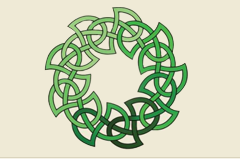Abstract
In the last chapters of The Last Battle, Lewis gives his readers a vision of the heavenly Narnia, or really of ever more real Narnias embedded within one another, people by the characters that readers have come to know through all seven books of the Chronicles, described as existing in physical bodies, though possessing abilities beyond those known in the Narnia outside the stable door (or even our own world). In this paper I will explore Lewis' representation of these "resurrection bodies" and what his representation of them means for his views on the body and the integrity of creatures, as well as the nature of his claimed Platonism.
In particular, I wish to put Lewis in conversation on these issues with several thinkers from the middle ages, including Hugh of St. Victor and Thomas Aquinas, who speculated extensively on the possibility and nature of resurrected bodies. But also want to bring Lewis into conversation with some more recent thinkers, including Michael Hanby, Graham Ward, and James K.A. Smith, who have made issues about the body -- especially the body of Christ and hoped for resurrection bodies -- central to their ontological speculations. My hope is not only to understand Lewis better, but to bring his insights and images into important debates about human existence as embodied creatures.
Recommended Citation
Muth, Michael P.
(2012)
""A Wild Hope": Resurrection Bodies and Lewis's The Last Battle,"
Inklings Forever: Published Colloquium Proceedings 1997-2016: Vol. 8, Article 18.
Available at:
https://pillars.taylor.edu/inklings_forever/vol8/iss1/18
Included in
English Language and Literature Commons, History Commons, Philosophy Commons, Religion Commons

